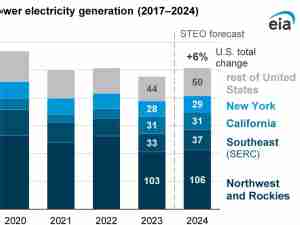A Reborn Harvey Threatens Gulf Coast, Sending Gasoline Higher
By: Brian K. Sullivan and Laura Blewitt | Aug 22 2017 at 05:28 PM | International Trade
The prospect of Tropical Storm Harvey reforming and taking aim at the Gulf of Mexico coastline later this week sent spot gasoline prices higher.
Harvey, reduced to a collection of thunderstorms over Mexico’s Yucatan Peninsula, has a 90 percent chance of becoming a tropical storm again by Thursday as it moves into the Bay of Campeche, the National Hurricane Center in Miami said. It initially formed last week east of Barbados before being torn apart by wind shear.
The Gulf Coast from Corpus Christi, Texas, to Lake Charles, Louisiana, is home to nearly 30 refineries—making up about 7 million barrels a day of refining capacity—and is in the path of heavy rainfall expected to start as early as Friday. Flooding poses risks to operations, while torrential rains can shut units and cause supply disruptions.
“The most likely scenario is it will be a tropical storm,” said Bob Henson, a meteorologist with Weather Underground in Boulder, Colorado. “It needs to be watched.”
Wholesale gasoline prices jumped in Houston on Tuesday as suppliers stocked up in anticipation of potential outages at refineries or fuel distribution centers. Conventional 87-octane gasoline rose 0.8 percent to $1.5630 a gallon, while premium prices increased 1.8 percent to $1.6983.
“Depending on the severity of the storm, fuel purchases at the rack typically increase and nonessential staff are evacuated from terminals, which could lead to supply shortages,” Mansfield Oil Co., a Gainesville, Georgia-based fuel distributor, said in an emailed alert.
Cotton Growers
There could also be problems for cotton growers if heavy rains fall on the plants as the bolls are starting to open, said Don Keeney, a meteorologist at MDA Weather Services in Gaithersburg, Maryland.
Should Harvey recover its strength, it will be in the Bay of Campeche where conditions are conducive for storm development, Henson said. State-run Petroleos Mexicanos said it has no plans to evacuate offshore oil rigs and gas platforms in the area though it will continue to monitor the storm.
A reformed Harvey could crash into the coastline anywhere from northeast Mexico to southern Texas and spread flooding rains as far north and east as Louisiana, especially if the storm stalls off the coast, Henson said.
As many as 7.6 inches (19 centimeters) of rain are forecast to fall between Corpus Christi and Lake Charles in the next seven days.
Since the storm is so disorganized, it doesn’t have a clear center needed for an accurate forecast from computer models. The outlook will get better Wednesday after the storm returns over the ocean, said Patrick Blood, a National Weather Service meteorologist in Dickinson, Texas.










